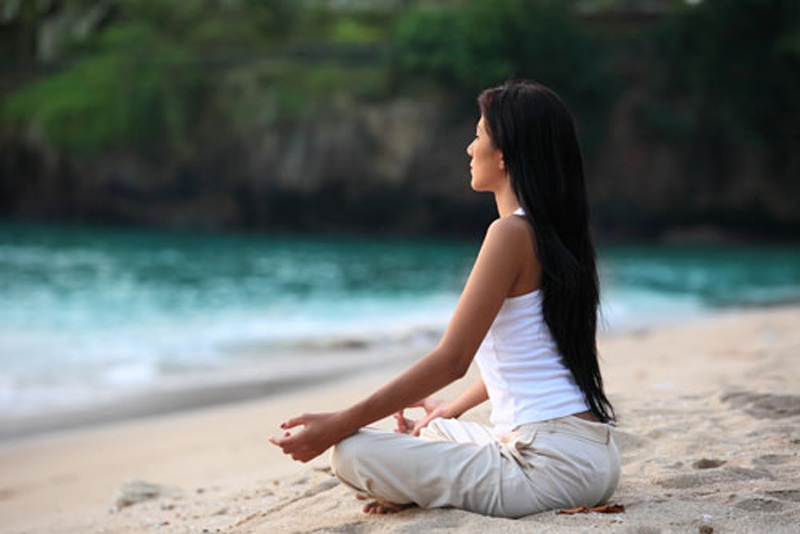Picture the scene: Its 4pm and you haven’t quite finished your report with a fast approaching deadline of 9am. You end up rushing through traffic to pick your children up from school but still end up five minutes late and have forgotten the kids’ afterschool snack.
On the way home you’re tying up loose ends to meet your deadline, before it’s time to perform your juggling act with dinner and the kids! By the time 9pm races around you’re exhausted sitting in silence with your partner, who is equally shattered. And you think to yourself ‘Will there be an end to this day?!’
And that’s just Monday! The rest of the week is a similar onslaught of activity and tension, save the weekly Friday morning trip to the gym for a power workout, where you can punch out your frustration!
Stress has become a part of our lives which we shouldn’t have to accept but need to begin to understand – we spend too much time stressing over stress!
What is stress?
Stress is the body’s physiological response to pressure, especially to events which appear threatening, challenging or involve change.
As humans we’re always striving to improve ourselves and it’s often adrenaline which allows us to action our desires. In fact moderate doses of stress boost the immune system, help fight off infection, and allow for a more efficient performance.
How does stress affect our bodies?
Our bodies’ response to stress is known as flight or fight. The flight or fight response is governed by our autonomic nervous system (ANS) which is part of our central nervous system (CNS). The ANS regulates the processes inside the body which are not under our conscious control, such as breathing and digestion.
The ANS has 2 parts to it: the sympathetic nervous system, which governs the flight or fights response and the parasympathetic part, also known as the rest and digests response and is also responsible for activities that occur when the body is at rest, especially after eating. The two parts of the ANS keep the body in balance.
During stress a complicated biochemical reaction activates each cell in our body, to stand alert ready to respond aggressively to the perceived threat.
The body then begins to work in a different way; breathing becomes rapid, the heart beats faster and blood pressure rises. This increases the circulation of blood to the brain which enables quick thinking and prepares muscles for fast action.
There is sweating, butterflies and palpitation, preparing us to fight or flee.
The flight or fight response is very primitive and is the body’s own natural design to bring us back in to equilibrium. Evolution thought of everything!
Most of the things that cause us stress today are emotional attacks rather than physical danger. We have well developed brains that we find difficult to switch off and hold memories which are difficult delete, so we end up judging and criticising ourselves about how we could’ve done better!
Personality has a vital part to play in how we should act and what our expectations of ourselves should be. This often masks the real spirit inside us that wants to be free from these expectations.
Stress is unspent energy and can become toxic if we do not activate the body’s natural recovery mechanism.
How do we reduce our stress levels?
Relaxation is the answer – time out! This allows us to be free from tension, anxiety, and stress. It allows our mind and body to run the ‘renew and refresh’ program thus allowing our spirit to shine through.
There are many ways to relax and unwind in the modern world from watching TV with a bottle of beer to listening to music, reading a book to having a spa treatment.
These forms of relaxation are external to our body and so are not as effective. Really what we need is to go inside ourselves to rest using our natural resources – activating the ‘relax and digest’ response.
So, how do we relax?
Through meditation and yoga, of course!
Yoga and meditation is an ancient practice dating back 5,000 to 10,000 years some say. Research shows how beneficial it is to combine meditation and yoga as the relaxation techniques realign mind and body.
Relaxation techniques allow us to let go of our thinking, leaving the past where it belongs – in the past! So that when we do come across what once may have been a stress inducing situation, our response is much calmer and more measured.
Even science has caught up with the yogis to show how brain waves change to an Alpha state (waves found when one is deeply relaxed or at the point of sleep) and thereby enhanced the credibility of the connection between the mind, body & spirit that occurs at a very deep level. We humans always need evidence!
How does meditation and yoga work?
Oxygen really is a miracle gas, without it we cannot exist. The process of breathing provides the nourishment needed to rejuvenate each of the cells in our body. Through our exhalation process, we take out the toxins from our bodies. The
more oxygen we get, the less tense, short of breath, and anxious we feel. Don’t believe us? Watch a baby sleeping!
The power of breath also works on a mental level. The more relaxed we are the more we mentally let go through the exhalation. Ever heard someone say ‘take a deep breath” when you’re agitated?
Breath control is integral to the practice of yoga and meditation. During Yoga each asana (pose) is practiced in tandem with the breath; we breathe-in to strengthen our minds and body and breath-out to relax further in to a pose and to let go.
The slower the movement, the wider the tissue expansion and the deeper the ‘renew and rejuvenation’ process can take place.
Read more in our next blog, where we teach you the basics of deep breathing and meditation…

